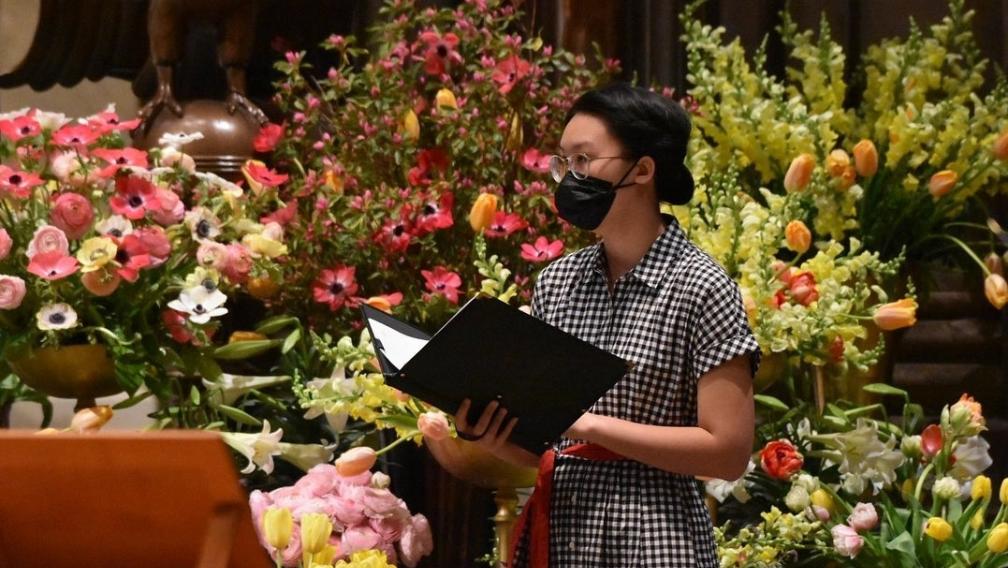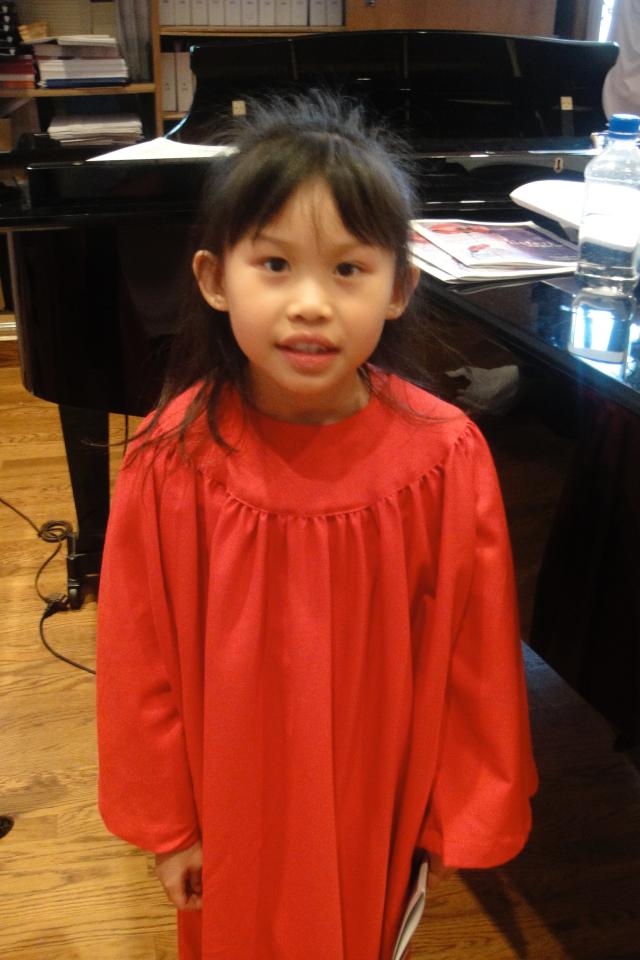Four Lessons from Trinity Youth Chorus

I’ve been a member of Trinity Youth Chorus since I was seven years old. As I graduate this week from high school—and the chorus—I’ve been reflecting on my time in the ensemble. I’m so grateful for the memories, the friendships, and for everything I’ve learned. Here are four lessons that I’ll take with me as I move forward.
1. Don’t stare at yourself in the TV monitor
My first concert at Trinity, as a little kid, was sunshine-themed. We were ushered in by Anne Damassa Graff in matching yellow t-shirts, and as we ran through “I Can See Clearly Now,” we were fascinated by the sight of our own faces on the massive television screens throughout the church. I had expected the public performances when I’d joined Peppercorns but did not really understand that the concert would be broadcast on the church website, nor the instruction: “I know it’s tempting, but please try not to stare at the screens.” A bit confused, but mostly excited (my family can watch this back later!), I focused my gaze forward.
2. Stand very, very still during instrumental breaks
Benjamin Britten’s Ceremony of Carols is a Trinity Youth Chorus) Christmas tradition (we perform it every year), which means Ceremony of Carols rehearsal is also a Trinity Youth Chorus tradition. We run the same sections over and over as new members learn the piece for the first time, discover that we’ve been singing a certain passage incorrectly for the past seven years, and, most importantly, learn how to stand as still as possible during the four-minute harp interlude. Recently, we’ve begun to perform Ceremony of Carols memorized and by candlelight, which has not made the interlude wait any easier.
As a performer, one year, you’ll notice that it’s a truly beautiful piece, and that the wait doesn’t feel so long anymore. That’s when you’ll know: you have aged.
Finally, there’s a solo in Ceremony of Carols “That yongë child.” It gets passed down from singer to singer every year, so when it finally gets to you, it’s really exciting. But it’s even more special to see who’ll get the solo the year after you, and I already can’t wait to visit and see how the next singer will transform the piece into their own.
3. You can make do without chairs
There were about four different vocal ensembles packed onto the stage of Carnegie Hall when we performed Ginastera’s Turbae ad Passionem Gregorianam, which left no room for chairs. Instead, we were told to just squat down for the movements we weren’t singing in—which was most of them.
I’ll never forget being precariously balanced on the balls of my feet, failing to hold back a grin while earth-shatteringly loud cymbals and horns and voices clashed around us. Being able to experience the very extremes of music from locations like St. Bart’s, Madison Square Park, WQXR’s Greene Space, and assorted subway stations around the city has been incredibly strange at times, but, looking back on it now, incredibly rewarding as well.
4. Friends make everything better
One day in rehearsal, I was so focused on trying not to drop my tower of music folders that I didn’t hear Anne playing “Happy Birthday” until I’d reached the rest of the group. We had Carmina Burana rehearsal until 8pm that night, but it was one of my best birthdays yet.
A year and a half later, we’re laughing and screaming over each other in choir-themed Zoom Pictionary. Of course, it’s a little sad that my last year with the choir wasn’t at all how I’d envisioned it, but my friends and our directors have still made it special in its own right. Growing up alongside the Trinity Youth Chorus for the past 11 years has been such a valuable journey, and I’ll always cherish the opportunities I had to learn so many things and make so many memories—and some friends along the way.







